A house with a beautiful botanical garden is a paradise for anybody who wants it. Waking up to the idea of living in a paradise is enough to entice anybody. What people love isn’t just its beauty and the benefits it offers for people and the environment.
You need to know how to maintain it and where to start when considering a botanical garden. Here are 10 ideas for your botanical garden with some suggestions, size, and layout so that you can get started with it right away! As always, Simphome presents you with the list.
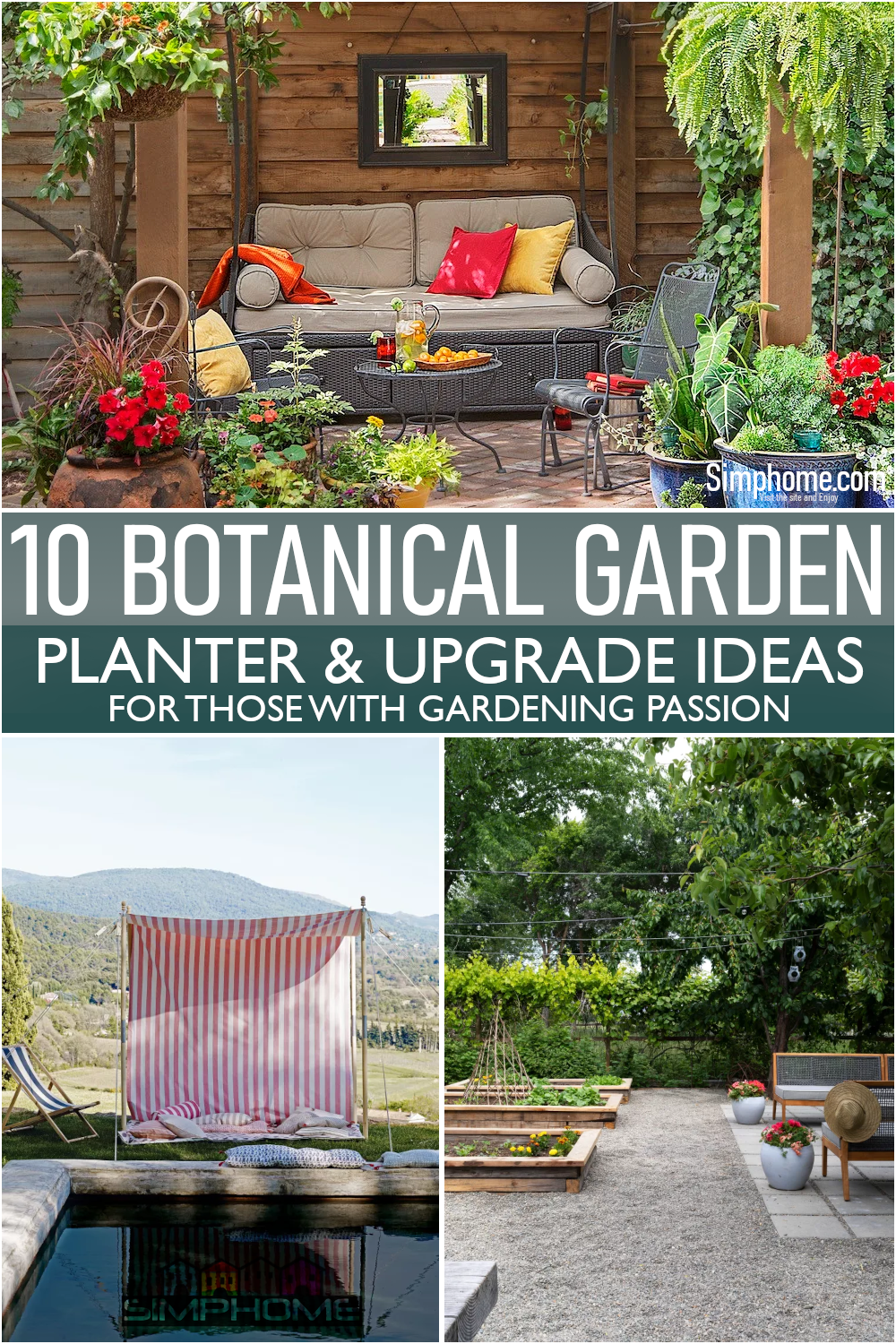
🔊10 Botanical Garden Video:
List Entries:
10. The Botanical Garden Basic
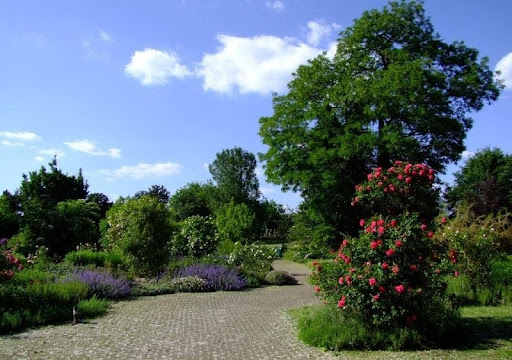 All of the plants in the botanical garden are not commercially available on the market, so there are two choices available that you need to select from; getting plants that are seeds and cutting or getting potted plants. What is essential is having a plan for your garden before you use either option.
All of the plants in the botanical garden are not commercially available on the market, so there are two choices available that you need to select from; getting plants that are seeds and cutting or getting potted plants. What is essential is having a plan for your garden before you use either option.
When talking about the benefit,
Improving mental problems is one of the sheer benefits you will get. Many people have had enough with the pandemic that’s been going around for a while.
Merging yourself with nature is the best and cheapest way to maintain your sanity during this hard time. A short walk can help you blow off steam and reduce your stress level, and that’s better than taking some medicines.
To start the Botanical garden, pay attention to:
- What do you want to get out of your garden? Do you want small plants that only need daily attention? Or do you want a garden where you can build a whole ecosystem where the garden is fully integrated with its surrounding? It’s up to you.
- How much time will your garden require each day? Will it be better to do all of the work yourself, or will it be easier if someone else does it while you rest? You have to weigh these options before making your choice.
- What kind of environment do you have? If you don’t want rusty metal and plastic that’s all over the place, then think about growing plants in containers. If you don’t want to be stuck with dirt or rocks under the patio, apartment plants are for you.
- What kind of chemicals do you use or need to use or have to use?
- How much water do you need? Are there any problems in terms of pollution or radiation?
- How much space do you have to work with?
- What kind of climate do you have?
- What kind of maintenance will it require?
- How much time, money, and energy will it take to create this garden?
- How do you want the garden to look like and feel like? Do you want it to be relaxing or serene or active as well as peaceful? How about your family and friend’s accessibility. How to help them quickly get into the garden? From the front door through a gate, etc.?
9. The Environmental Aspect of A Botanical Garden
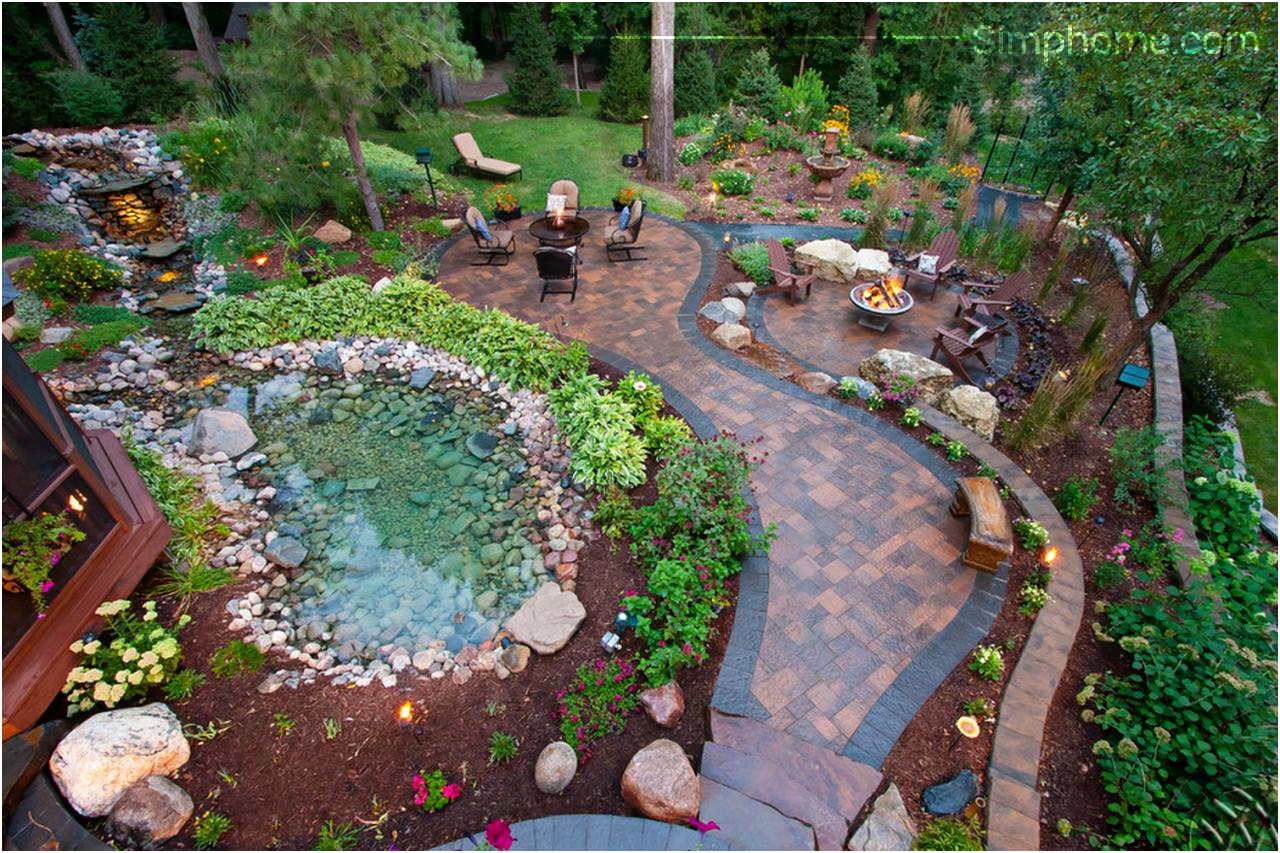 To live in harmony with nature, we have to be able to know the science behind it. One of the things that have impacted us the most is the weather change.
To live in harmony with nature, we have to be able to know the science behind it. One of the things that have impacted us the most is the weather change.
Large space allows you to have different kinds of plants and trees for your botanical garden. A botanical garden is a home for various little creatures that give a huge contribution to the environment.
It can also help other animals to have a safe zone to come for a visit. Your kids can learn from their bond between plants and animals that we need each other to live on this planet. We need to keep the balance.
Other positive impacts of a new Botanical Garden such as:
- Boosting environmental awareness.
- It can help you develop new skills such as a green thumb, horticulture, and gardening.
- You get to enjoy the fresh air and sunlight exposure.
- It brings positive memories of you and your family members because this outdoor activity is usually done together.
This kind of Botanical Garden can be built in different sizes depending on your needs. A mini or small-scale garden which is an easy project for beginners, can be implemented by putting several kinds of plants to have a small but lovely environment for a patio or rooftop.
8. How to maintain a Botanical Garden properly?
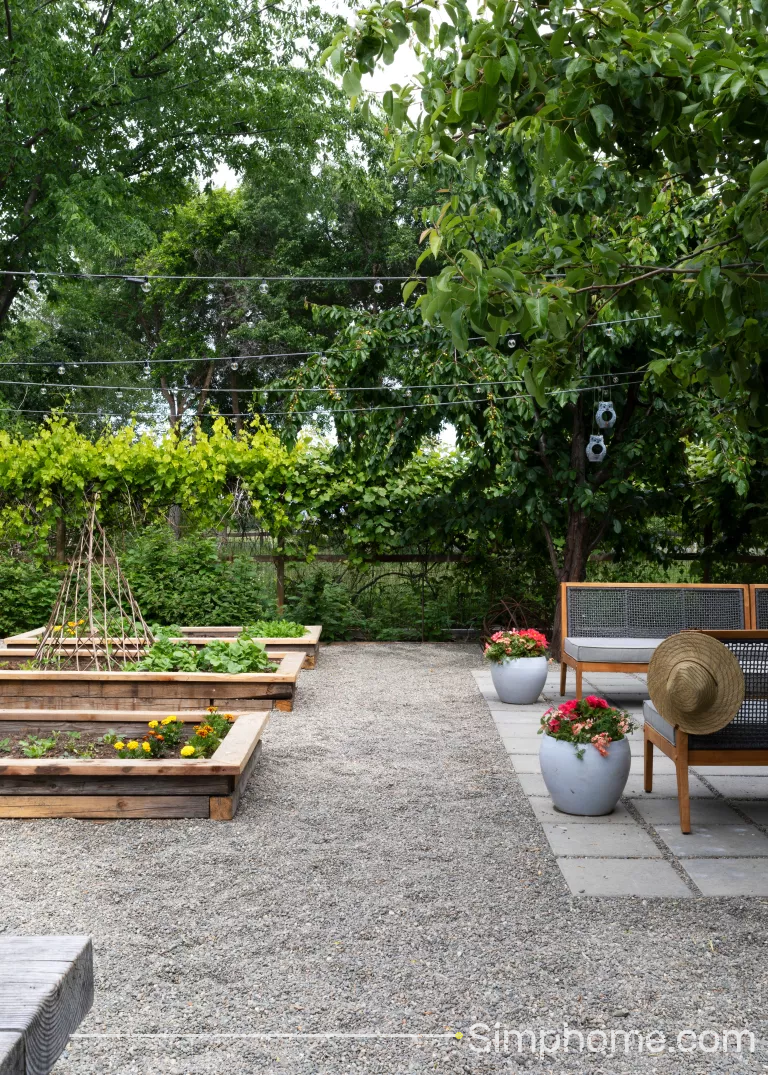 Maintenance is one of the requirements to have a beautiful botanical garden. It wouldn’t be a dire problem if you have spare time or spend some time taking care of them.
Maintenance is one of the requirements to have a beautiful botanical garden. It wouldn’t be a dire problem if you have spare time or spend some time taking care of them.
Once you know how to handle your garden, you will eventually get used to it, and it will become your favorite activity to do.
If not, you may ask for help to look after your garden just in case you are on a long-term trip and won’t be at home for a while.
It should be a fun activity to water, prune, or fertilize them. Make it your lovely retreat after battling with your crazy schedule at work or any other issues that you just want to forget until you get the answer.
Additional instructions:
- Avoid certain materials that can kill the plants
Also, avoid using plastic containers that are not airy. This idea is one of the basic requirements you have to consider since some plants do well in partially shaded areas while others need a lot of sun. - Don’t get big pots for your indoor plants.
They will get tired out quickly, and their growth can slow down, so they might lose their beauty and looks. - Don’t choose dark-colored pots made with concrete or other heavy materials as they are not suitable for the environment, and worse of all, they don’t look as lovely as lighter ones made from wood or glass materials.
- The biggest problem is the poor drainage.
You should put outdoor pots in a place where they can receive adequate sunlight and have enough space to grow and in an area that drains well. If you place your plant near a tree, be careful because roots can hinder the tree’s growth as well. - Over-watering plus too much shade can kill plants despite how beautiful they are.
The same goes for over-fertilization and constant over-watering, which can lead to root or stem rot and other issues that you don’t want to deal with, like bugs or weeds inside your plant pots. - Don’t allow heat, cold, or rain directly flowing from the sky.
Having cracked pots will also end up being a problem because it will make them weaker and lead to a lot of issues such as pest invasion. - Some plants need particular soil and conditions for their growth and flowering; you have to check those requirements before planting.
- Finally, test the soil for quality to avoid common health issues such as root rot.
7. A Secret Botanical Garden idea
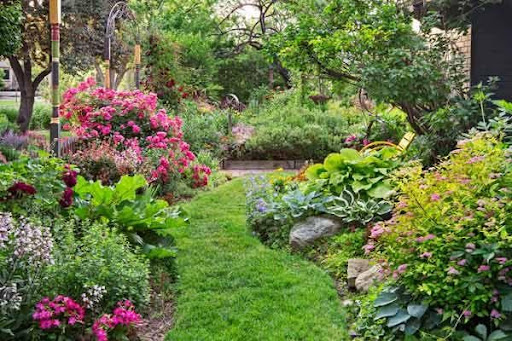 To build a secret botanical garden, you might want to set up a fence around it and plant some flowering plants in your garden. There are many ways to make sure no one can find your garden. You don’t have to keep it a secret if you don’t want to, but then it will be your go-to zone when you just need a place of peace.
To build a secret botanical garden, you might want to set up a fence around it and plant some flowering plants in your garden. There are many ways to make sure no one can find your garden. You don’t have to keep it a secret if you don’t want to, but then it will be your go-to zone when you just need a place of peace.
Even specific plants can help you become invisible from your neighbors or anyone who passes by from the outside. If kept in good condition, they will give your family or friends privacy when they need it the most and give them some sense of what nature has provided us with the best – relaxation and peace of mind.
One thing you need to know,
Good soil and water source would be the base foundation, as plants would absorb nutrition from it. These are some crucial points that you need to consider when it comes to gardening.
These aspects can be a turning point when you expect how well your plants, flowers, or perennials will grow. The garden must also receive adequate sunlight since it’s essential for plants to thrive.
6. Make the Landscape Plan
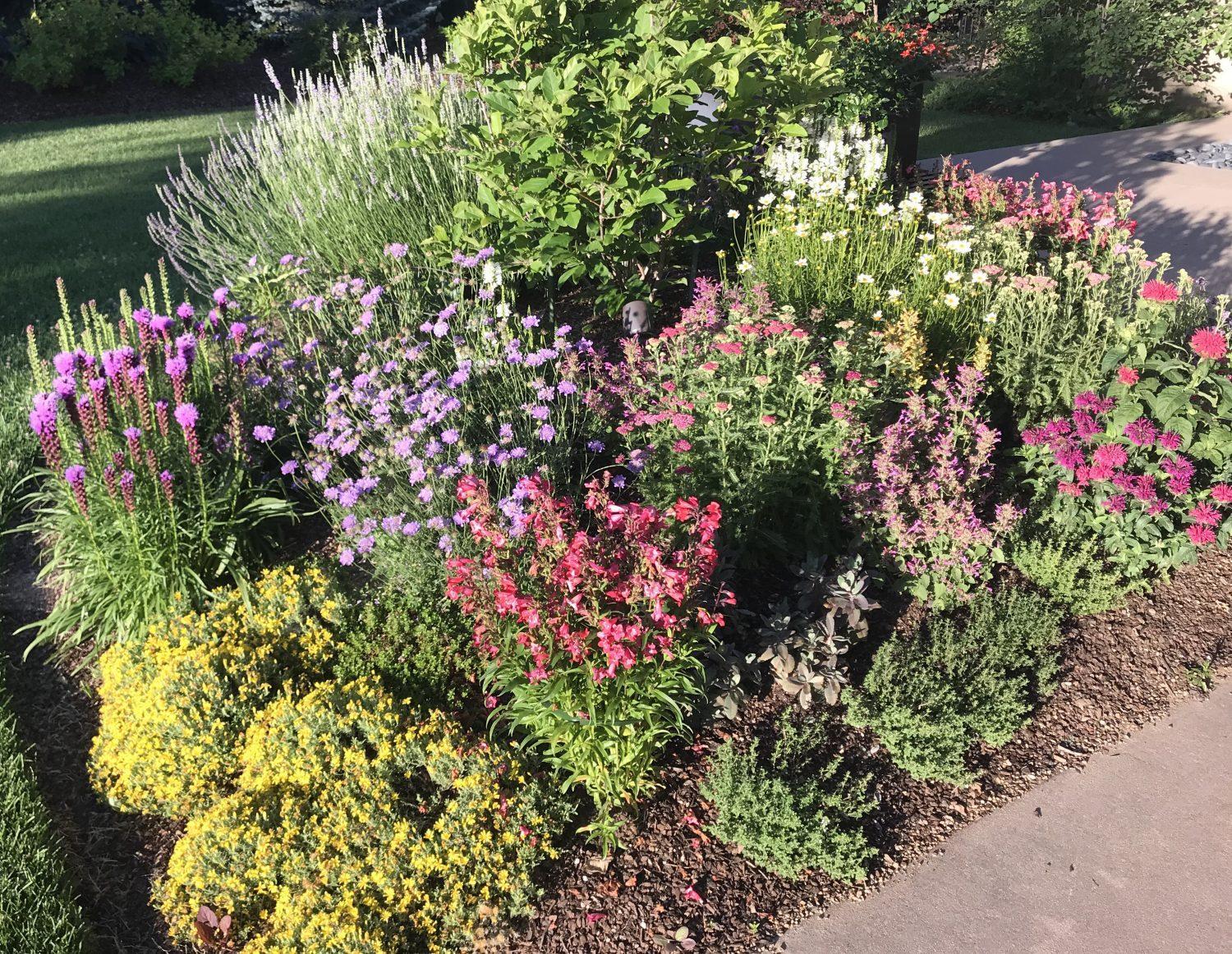
That should give you a look at your garden landscaping idea. It works for a spacious outdoor space.
How to landscape a simple Botanical Garden for cheap?
- Step 1: Choose the plants.
- Step 2: Start digging the soil.
- Step 3: Spread and plant your flowers.
- Step 4: Pay attention to the Complementary Colors.
In other words, complementary colors are colors that are directly opposite each other on the color wheel. If you have a blue-green and orange combination in your garden, the orange will look even brighter, and the blue-green will look deeper.
For example:
Sunny Flowers. If you want to show off your garden, bright flowers are just what you need.
White Flowers. This color is great for a natural feel in any season, winter or summer! - Step 5: Pay attention to Intentional Plant Height.
Specifically, plants that grow tall (such as maple or pine trees) usually have a deeper shade of green in their leaves, while shorter plants (such as white, purple, or blue flowers) tend to be lighter.
For Example:
Red Flowers. If you have a plant with red flowers in your garden, they can become even more vivid when paired with other colors, such as blue or orange.
Blue Flowers. Light blue flowers will look more profound and more vivid when paired with bright yellow or green colors.
Purple Flowers. Purple flowers will look more dazzling when paired with green or white. - Step 6: Pay attention to the Contrasting Colors.
These are colors that are placed side-by-side on the color wheel. A good rule of thumb for a complementary color combination is to use three colors: the base color, its complement, and a third contrasting color.
For Example:
Yellow Flowers with Red Leaves. This combination may seem strange at first because yellow and red are complementary colors on the color wheel. Still, together they produce an exciting contrast that looks appealing to the eye when put together in one garden scene! - Step 7: Be cautious about what plants you put together.
Find out their needs and choose those that do not compete for water, sun, or nutrients. - Step 8: Perennial and annual weed control.
In other words, look after your plants once you have planted them.
Pests want to attack your garden plants, so you need to put it up as a priority on your list of priorities. There are several ways to get rid of weed in your garden, and most of them are easy to carry out:
You can also look at using chemicals for the best results. There are chemical controls and organic ones. The former is more common, but the latter is safer for the environment and for anyone who likes gardening or growing things naturally.
Look after your garden soil, water it regularly, and make sure you raked it up when you water plants. - Step 9: Add water every day to the pots or when necessary.
Botanical gardens are places you can visit to breathe fresh air and immerse yourself in nature. This area is where you can learn more about plants, flowers, trees, and even animals because they spend their lives in these beautiful gardens.
It has become one of the most popular outdoor activities nowadays, mainly because people find them a nice escape from busy lives. You can also have your botanical garden at home or your office if you have the money and time to invest in it.
5. Use the Wall
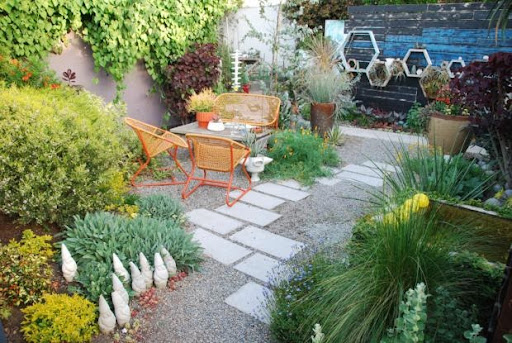 A small area shouldn’t discourage you from having your own botanical garden. You can grow plants in pots and arrange them to create harmony, taking advantage of their colors.
A small area shouldn’t discourage you from having your own botanical garden. You can grow plants in pots and arrange them to create harmony, taking advantage of their colors.
When you have a concrete surface, and your plants have already taken the space, the walls can provide some space for plants. You can have vines that can fill the wall or panel. It decorates your garden when your space is limited.
Limited space requires a small portion of the materials needed, right? A bigger budget won’t be necessary as it would be too much.
Other Wall Gardening ideas and tips and you need to know are:
- You don’t need to have a garden designer design your wall.
Do it yourself! It’s fun and easy to do it.
You might check out some examples to get some tips.
Such as:
20+ Garden Design Plans
10 Small Garden Balcony Ideas
10 Small Garden Styling Ideas
10 Minimalist Backyard and Garden Ideas
10 Country and Cottage Garden Decor Ideas
10 Small Indoor Garden Ideas - No heavy digging and planting here, so you won’t harm your walls!
- It doesn’t take a lot of space; just a portion of the wall outside, porch, or patio will do the job for you. If not, use whatever walls you have: interior or exterior ones.
- If you have a family, try to choose some plants that are suitable for children. If not, plant some low-growing ones that children can’t reach easily.
- Planting in the winter is ideal! It will help repel pests and attract beneficial insects. Your children will love you and your garden!
- You can even grow herbs here!
- You might have to dig out the old plants if you want some space for more plants and flowers. Just have fun with it!
- Use the Vegetation
In other words, have a living garden!
Incorporate it into your design. If you have a small yard, you can still include veggies. You can grow some green beans and tomatoes in pots or planters. If not, you can build a vertical garden using bamboo to create trellises for plants to grow on, like cucumbers, peas, beans, and more!
To build new wall planters, your instructions are:
- Get the terrain you intend on growing your wall plants.
They are tall enough for the plants to grow on. You can also use bricks or stones for this purpose. - Place the pots, planters, or wall planters in their corresponding locations.
Now you can fill them with soil and plant the seedlings you have chosen. - Adhere the Plants
Follow the instructions for your plant and use strong adhesive tape on the back of an eraser, and stick it on the plant.
Do not place any tools or instruments that might hurt your plants. - Irrigate Once a Day.
The water will give all the nutrients needed for them to grow in healthy conditions. You should have enough light for most of them to thrive like a living garden in your wall! - Make them Vertical.
You can make things like pencil planters and chalk holders by cutting out tiny pieces of wood, metal, or cardboard, just big enough to hold small objects and also have holes for drainage so you can water it quickly if necessary. - Hanging Baskets
Hanging baskets are accessories designed to support plants in hanging pots or planters, allowing them to grow without being crowded while getting proper drainage and light exposure.
4. Choose the Plants
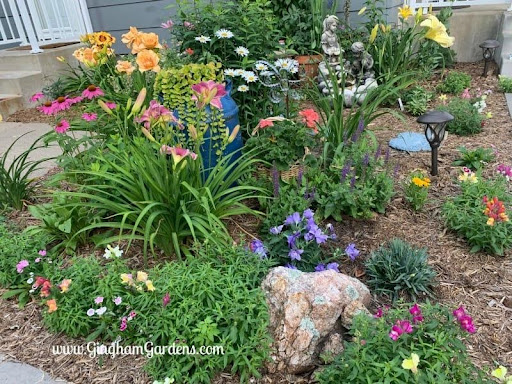 Before deciding what plants you’ll have for your outdoor retreat, knowing the environment would be the first step, you should take. There are types of plants that grow wild and consume so much space.
Before deciding what plants you’ll have for your outdoor retreat, knowing the environment would be the first step, you should take. There are types of plants that grow wild and consume so much space.
That won’t be nice as the others would be outgrown, not to mention that your space is rather small. It would be wise not to pick any random flowers that are inappropriate and just be a mismatch.
Picking plants that won’t grow large will be perfect. You can have many different plants, and they can still have space to breathe as they don’t get too close to each other.
Name of plants that you can consider such as:
Plant 1. Dwarf Cactus
It’s a cactus that only grows up to the height of 4 inches, but they are lovely. It’s also perfect for small spaces as they grow in many varieties and are perfect for hanging baskets or planters.
Plant 2. Dwarf Pampas Grass
It is perfect for hanging baskets because it is a low-growing plant that will not take much space above your head, and it grows until 6 inches high. The leaves of this grass are also so beautiful as they are long with purple edges, and short stalks can be folded over, giving them a beautiful look, making them unique to other grasses found elsewhere in nature.
Plant 3. English Ivy
It is a vine that is easy to grow and is quite attractive as well. It will give off beautiful purple flowers for your garden.
Plant 4. Spanish Ivy
This vine can also be grown indoors, but it grows quickly and has strong, gnarled branches that are very tough, thus making it an attractive plant for hanging baskets or planters. You might also notice that this vine has very thorny leaves, making it hard to pull out but still usable in the garden.
Plant 5: Lobelia
Lobelia is a plant that is also perfect for hanging baskets. It also grows fast, but it is not impossible to remove it from your orchard if you want.
Plant 6: Mint
Many people like to have these in their gardens, and they are great for hanging baskets. They are effortless to grow and will grow up to 2 feet in height. You can use them in small planters as well, but they’re best when grown indoors.
Plant 7: Petunias
This plant grows up to 3 feet tall, but since it is a perennial, You can use it both inside and outdoors. It is a beautiful plant that produces bright yellow flowers throughout spring and autumn.
Plant 8: Geraniums
Growers also prefer these plants due to their beauty as well as their strong perfume when they bloom. They also grow in hanging baskets or planters.
Plant 9: Wallflowers
These plants have bright red flowers in color, and they are grown in hanging baskets or planters. They give off a sweet scent, making them great for your yard.
Plant 10: Marigolds
These cute yellow flowers can match any other color, making them unique in the garden as they are considered very beautiful.
Plant 11: Zinnias
Zinnias are also suitable for your garden as they are colorful and attractive. You could even grow them in pots, too, if you want a low-maintenance flower that is attractive to look at.
Plant 12: Creeping thyme
This herb is perfect for hanging baskets and small planters due to its low height and pretty green color. It will also give off a pleasant scent to your outdoor retreat as it grows alongside you in your garden.
The additional information you need to know such as:
- No 1: Place them in the right place.
Choose a corner of your yard where they will be out of reach of children and pets. You can place landscape lights around the wood to help it grow better and faster. - No 2: Irrigate.
You should make sure that there are no rocks or broken stones in the soil, as these objects will make it hard for the plants to thrive. Therefore, you should place something that will keep all the water in one place so they can get enough water in a short period. - No 3: Keep them away from direct sunlight and wind.
Sunlight will burn up your plants, while wind will blow them down since strong gusts of air can easily blow them. - No 4: Make sure you have sufficient space around each plant for them to grow.
This step is critical to consider because you don’t want your plants growing in the wrong direction, which would block other healthy ones from getting sunlight.
Additionally, you should have a planting guide for each type of plant to know how to take care of them. - No 5: Do not disturb the roots when watering or weeding.
While weeding, if your plants are small enough, you should try to remove weeds with your hands instead of using a weeder or hoe since the roots are still young, and you don’t want to destroy them when removing the weeds from their growing area. - No 6: Feed the plants with plant food regularly.
This step is vital because it will make the plants grow in healthy conditions nourished only by food and water. - No 7: Water regularly as needed and keep them always clean.
As soon as the leaves feel dry, you should water them as often as needed to prevent the plant from drying out. - No 8: Make sure they do not stand in water for a long time (refer to Houseplants Watering).
You can easily damage houseplants sitting in water because the roots should not come close to a dripping water source. - No 9: When plants fall out, transplant them immediately so they can start growing from scratch. Once plants have fallen from their environment, they will be easy targets for bugs, pests, and diseases that destroy a healthy plant and make it unlivable.
- No 10: Last but not least: Avoid using pesticides, herbicides, fertilizers, or fungicides on your plants.
Pesticide is the main ingredient used in the growth of a plant; herbicides suppress the growth of other plants- they kill them- pesticides inhibit root and stem development and cause them to be dead already.
Herbicides are used to treat plants with diseases or pests. It’s recommended that you do not use these chemicals in an area where there are plants to avoid damaging them and destroying their ability to reproduce themselves since their reproductive capability will be destroyed when using these chemicals.
Fungicides are meant to prevent fungi spores from growing on leaves and soil, helping with disease prevention.
3. Landscaping the Botanical Garden with Rocks
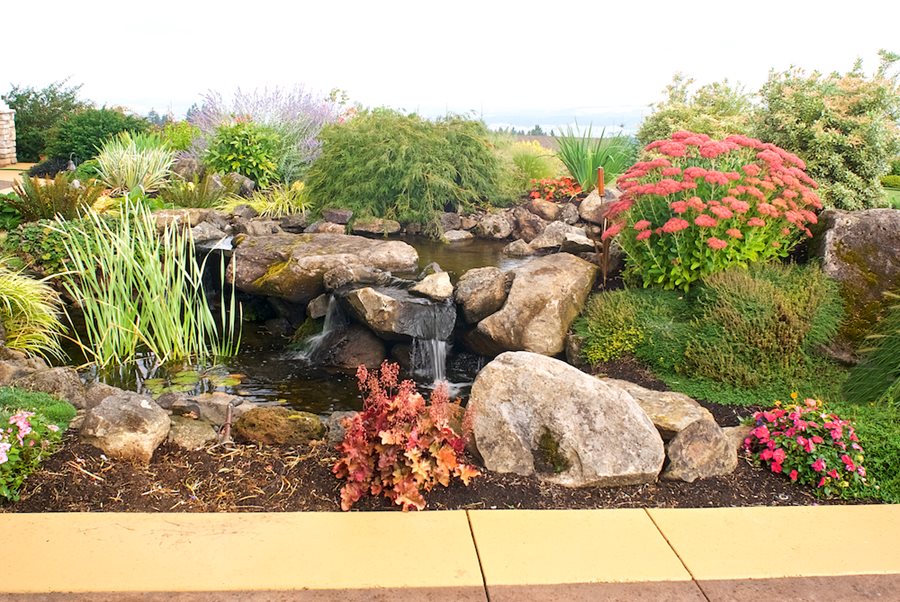 Landscaping the garden isn’t something you could take lightly. It will create the overall looks. There are many ways of decorating a garden to acquire a lovely view, but it may cost you a fortune.
Landscaping the garden isn’t something you could take lightly. It will create the overall looks. There are many ways of decorating a garden to acquire a lovely view, but it may cost you a fortune.
In this case, you can try measuring your budget with what you want to apply to the garden. It could be a disaster when you plan on making an incredible landscape, but unfortunately, you run out of money.
Rocks are an element that goes well with flowers, plants, or succulents. They do. But it will take time to decorate them and to get the best result.
More detailed instructions:
- Pick the right place.
You should try to find some free space in your garden, but it would be better if you could put a fence around it so they won’t get damaged by animals and kids who may stumble upon them. - Collect rocks from your yard or any other area of your home to provide you with the stones you need.
- Decorate them however you want to make it look like the one of a kind in the town while still providing a natural touch.
- Give them a visit once in a while to make sure they are water-wet and keep them away from direct sunlight and wind.
- After that, wait for a few weeks so their roots can grow longer and stronger, and then you can plant them properly by making holes in the ground so their roots can take hold of the soil.
- Once planted, you should water your plant regularly as needed, but don’t let them get too much wet because it will cause damage to the roots.
- And last stop: Keep them clean from all scrapes and dust so they can grow nicely without any diseases or pests getting to them.
2. Green Landscaping For Cheap
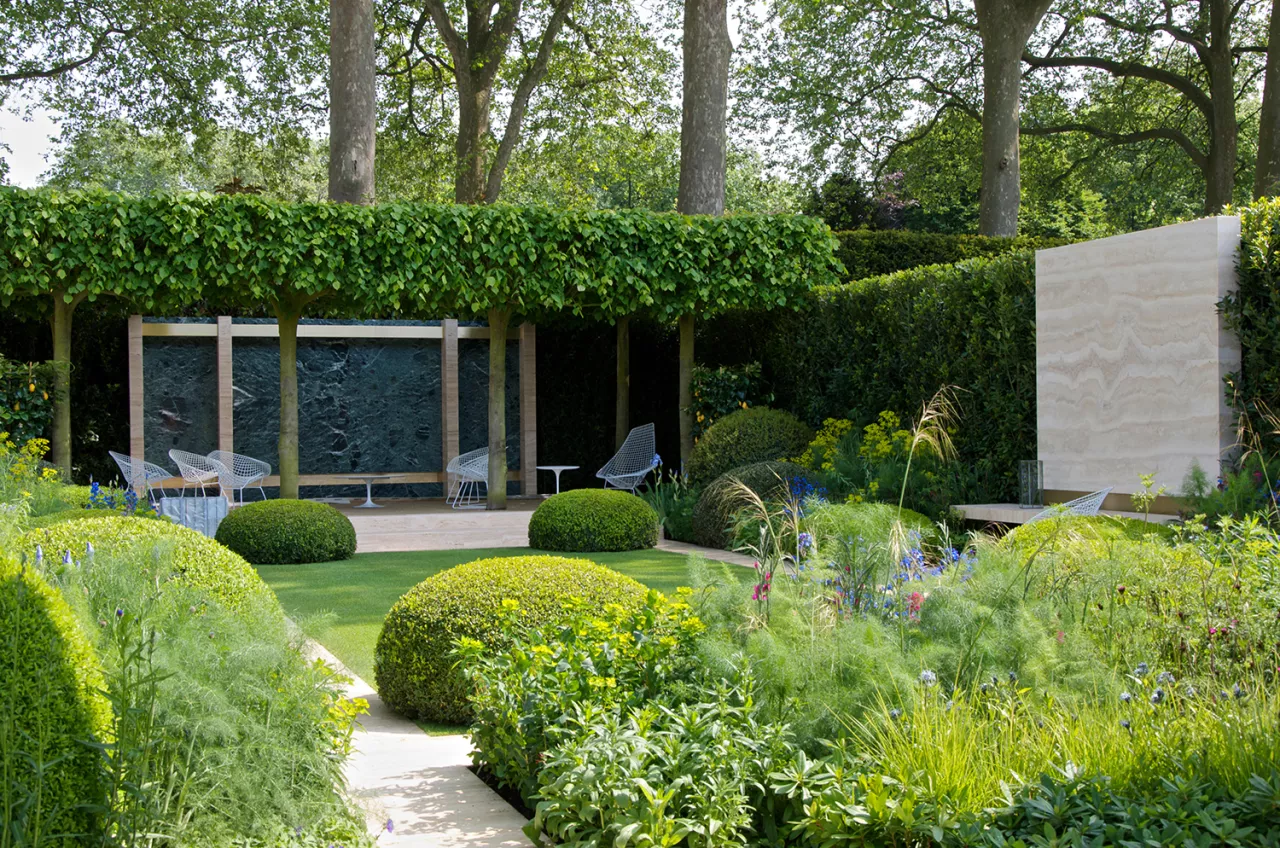 Evergreen plants or shrubs not only offer a stunning landscape, but they also give you some more time to relax as you don’t have to clean its leaves very often.
Evergreen plants or shrubs not only offer a stunning landscape, but they also give you some more time to relax as you don’t have to clean its leaves very often.
This type of garden suits people whose hands are tied with a hectic schedule or just don’t really into gardening stuff such as pruning or sweeping. It makes a good background in quite a long period for sure.
They turn your yard into a jungle-like outdoor space depending on what kind of evergreen plants you apply. There are plenty of evergreen shrubs you can pick to give your garden a texture, landscape and provide some friendly shelter for butterflies, birds, and other animals.
They have a variety of colors with their abilities to stand extreme weather.
It means you should select them carefully based on their advantages and disadvantages.
Other low maintenance garden elements you can take advantage of such as:
No 1. Driftwood.
It will bring out a fantastic look to your house, especially if the landscape design is simple.
No 2. Shrubs and trees.
They may have a hard time in the first year to grow well, but after that, they can be gorgeous and provide a natural touch to your garden.
No 3. Conifers and ornamental grasses.
These plants can survive for years without pruning them or giving them any attention because they are not too demanding about water, sunlight, or soil pH level.
No 4. Mosses.
They can survive even without direct sunlight but just give them enough water when in need.
No 5. Ground cover plants.
The best example is creeping thyme or creeping juniper that will exit small holes and gaps in your yard to stimulate the landscape design.
No 6. Old-fashioned trees and shrubs have adapted to withstand hot or cold weather conditions.
They are resistant to frost, so they are very versatile as they can grow in different places all over the neighborhood for years without any problems.
No 7. Planters.
By this, you can create a low-maintenance yard by using something like moss balls or terracotta pots with dirt in them to help them grow better.
No 8. Decorations made out of wood and stone.
From stones to wooden planks, they can give your garden a cozy feeling down under the ground or up on top.
No 9. Concrete and sand make your garden eco-friendly as its main component is natural. And it certainly doesn’t use any harmful chemicals for its construction and can last for decades depending on how well they are taken care of.
No 10. Fences and walls.
They provide a natural touch to the landscape design and welcome animals, birds, and butterflies to your yard.
No 11. Umbrella trees grow in a small framework, and it needs hardly any sunlight at all for its growth but rather only water.
No 12. Water features.
Water features can add some style and functionality to your garden without ever having you worry about watering them again because they are just natural as the rest of your plants and shrubs in the yard.
Lastly, Number 1. Don’t Get Discouraged with Low Budget
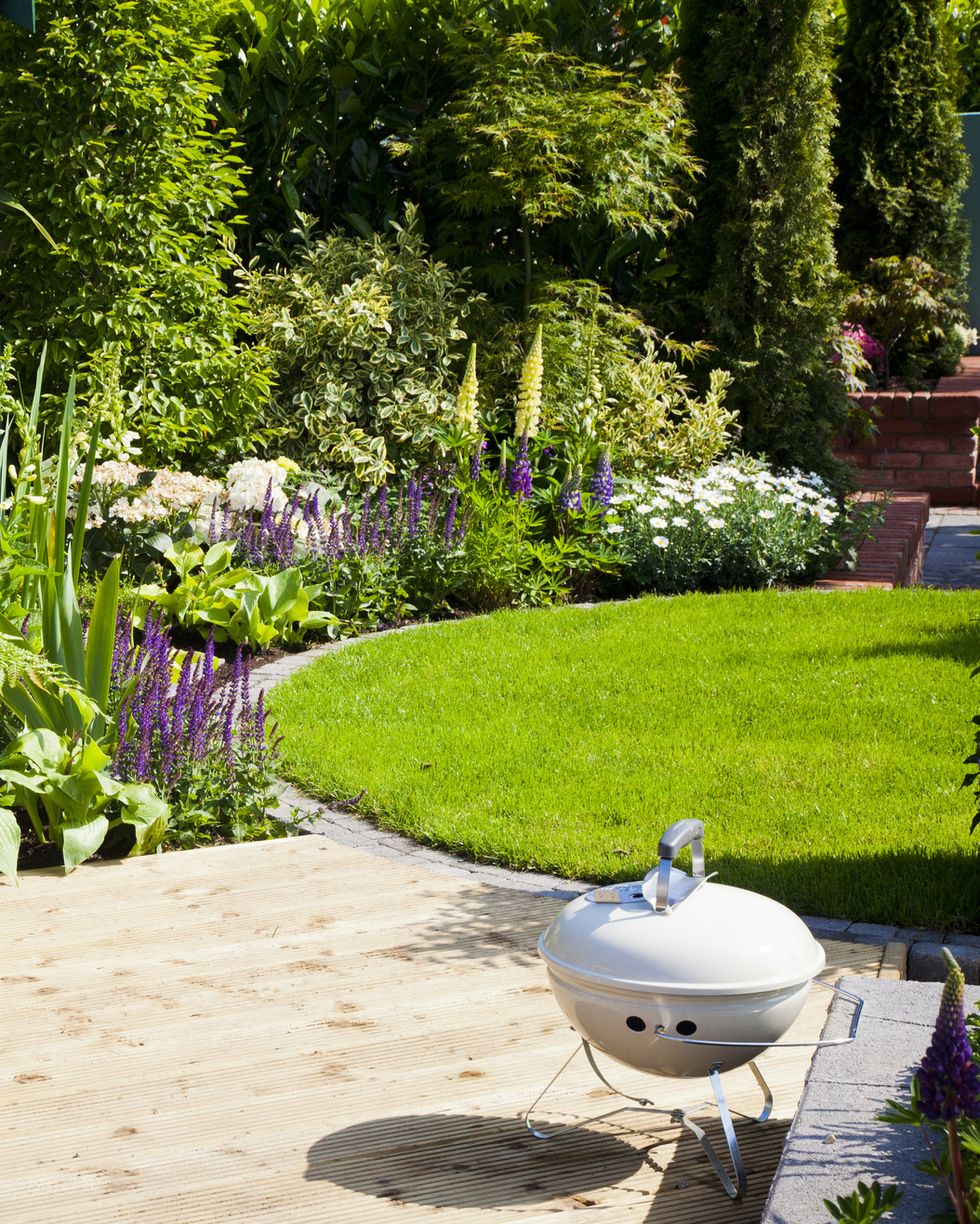 The budget is what controls anything when it comes to decorating outdoor space. Many people want a fancy garden, but they have to be satisfied with what they could afford due to limited sources.
The budget is what controls anything when it comes to decorating outdoor space. Many people want a fancy garden, but they have to be satisfied with what they could afford due to limited sources.
But it doesn’t mean you can’t have an extraordinary botanical garden. Opt for affordable plants but still look attractive. It’s not really about luxurious materials you include there. It’s more in the idea and harmony you come up with.
Other low budget garden ideas you can try such as:
- How about putting some decorative rocks in your garden?
- Use ground cover such as ivy or succulents to add an instant look without much expense.
- If you have a small yard, you should grow some climbing plants suitable for your location and don’t take too much room.
- Go for annuals instead of perennials to cut your costs down by quite a bit because they only grow for one season. And then, you have to replace it with new ones the following year, but it means less maintenance compared to perennials.
- You can choose a garden bench to help you relax when gardening.
- Think of using pieces of wood such as pallets from your yard to constructing a planter in front of it, and that way, you can also give the garden a more rustic look.
- Use some colorful gravels if you want something more natural to go with your plants. You could also use mulch or brick chips as the soil for those things, and it will also help give your yard a creative look.
- Just put small containers filled with colorful flowers in different places to add some color without obsessing about picking the flowers every day.
- Add some hanging baskets that will light up the mood of your garden and create a unique decoration.
- If you want to use pots to put your plants in, try something like a concrete one. They are pretty resistant and can last for years without any problems.
- Put a variety of colorful stone pieces on the ground if you have a small budget, or just use some natural ones you can find around to save money on construction material.
- Use some wooden materials as the border for your garden with whatever form they have, such as pallets or wooden boards, to turn to turn your landscape design more unique.
Conclusion:
Every outdoor space has its characteristics when designed by different people. Plan your flower garden with our 10 ideas for creating outdoor havens and enjoy your time there.
References:
10. Gardeningtips.in
9. Hgtv.com
8. Homesandgardens.com
7. Thisoldhouse.com
6. Denverpost.com
5. Ocregister.com
4. Ginghamgardens.com
3. Gardendesign.com
2. Livingetc.com
1. Housebeautiful.com